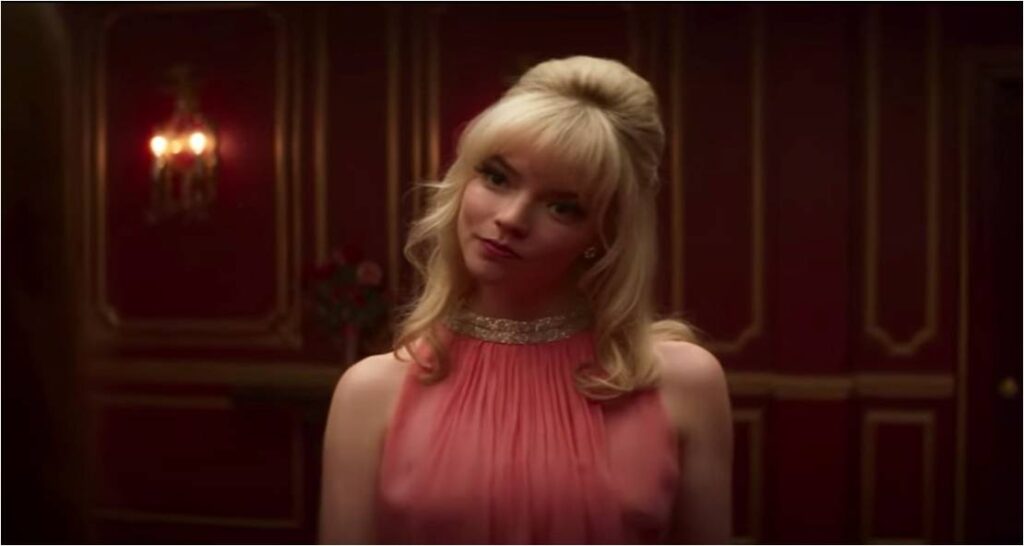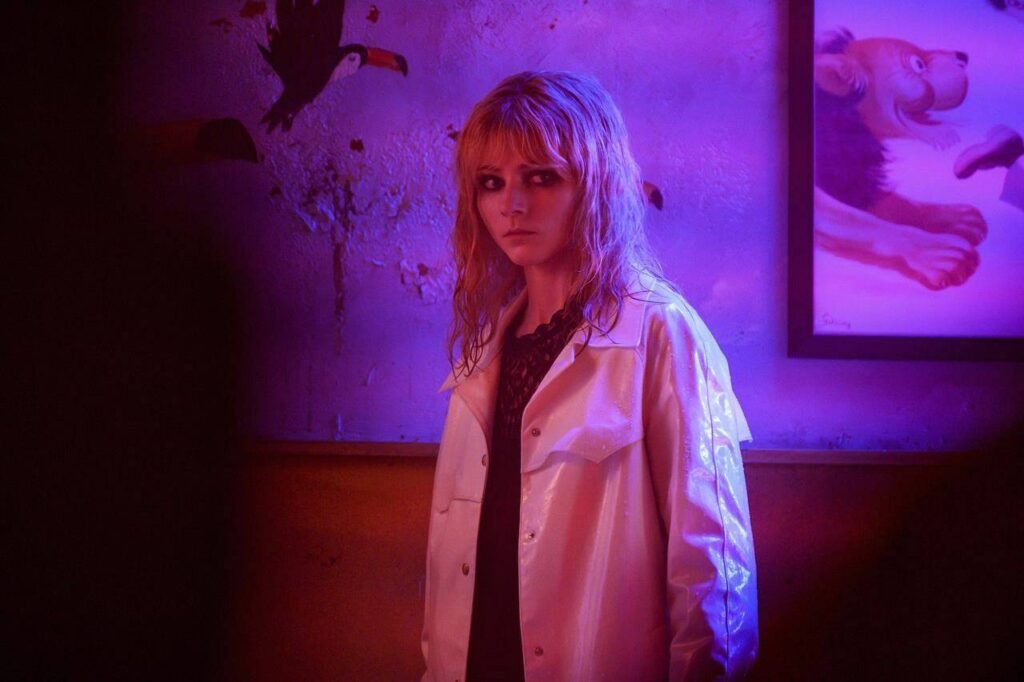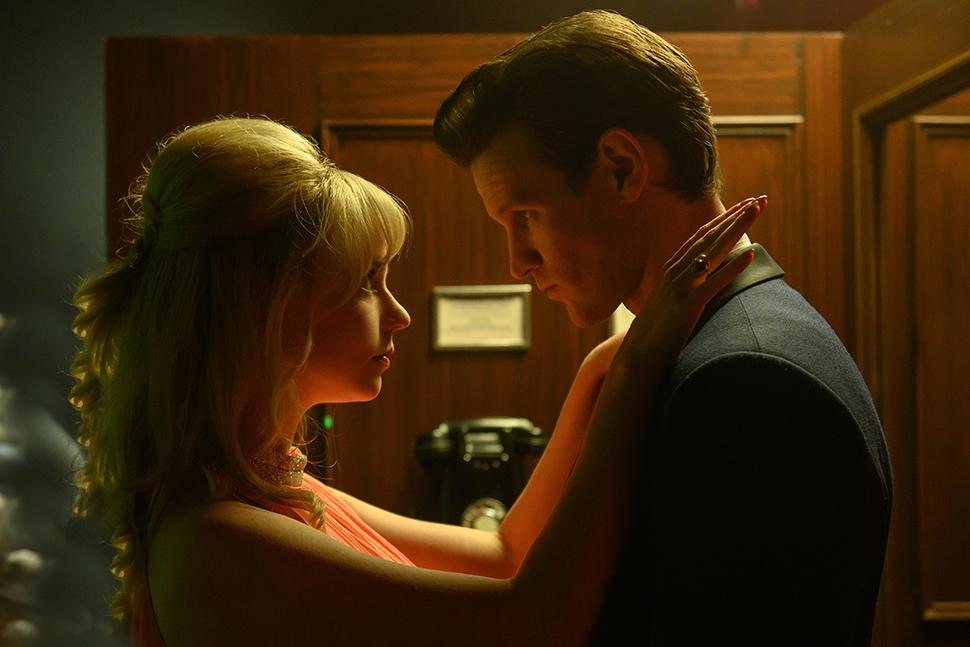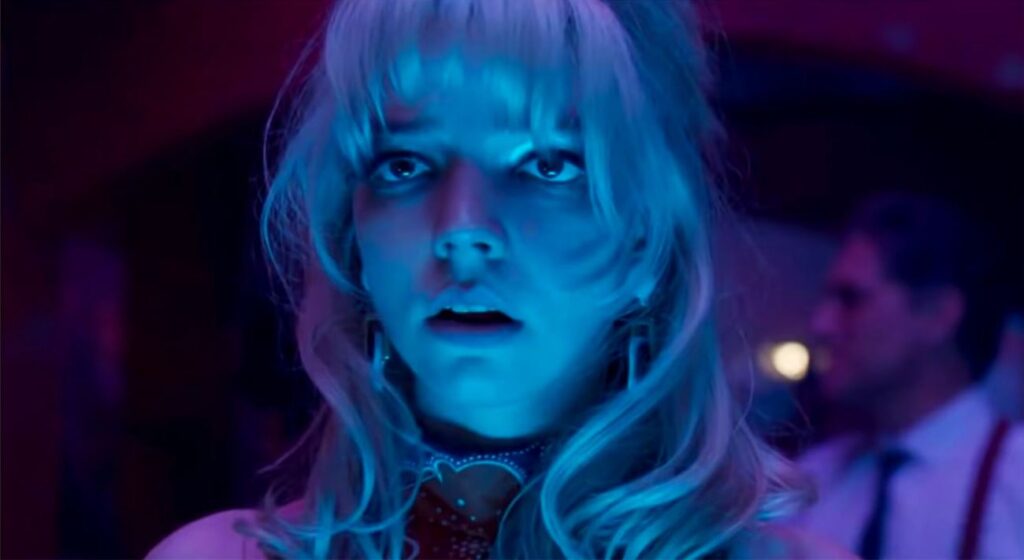
Remember the Swinging Sixties? That blissful English era of artistic revolution, high hedonism, and rampant sexism? At least, I think that’s what it involved; I wasn’t alive at the time, but I’ve consumed enough cultural artifacts from the period to approximate the woozy sensations of decadence and discovery. So has Edgar Wright, a voracious student of 20th-century pop culture whose movies tend to function as tributes to his dilettantish obsessions, as well as advertisements for the breadth of his own taste; his prior film, Baby Driver, was less a heist thriller than a feature-length playlist of classic tunes with vibrant visual accompaniment. Wright’s new feature, Last Night in Soho, initially scans as an ode to the lascivious London of yesteryear, a passionate homage to the pristine past that doubles as a sour lament for the degraded present. But there is more going on here than you might suspect—more ideas, more innovation, more mistakes.
“I like the old stuff better,” says Ellie (Thomasin McKenzie), an aspiring fashion designer newly arrived in London from the country. It’s a valid preference—the music that pours through her Beats by Dre headphones includes hits by The Kinks, Dusty Springfield, and Peter & Gordon—that nonetheless carries dubious implications. Nostalgia can be simplistic as well as seductive, and many a filmmaker has fallen prone to romanticizing the gauzy bygone days without grappling with their dark marks and complications. This time around, Wright is smarter than that; Last Night in Soho is simultaneously an appreciation and a reckoning. It conjures a hypnotic veil of old-world glamour, then vigorously pierces it to reveal the rot festering underneath.
Perhaps too vigorously—at times, the movie splinters from the force of its own exertion. But if Wright was searching for an exemplar to shatter the myth of good-old-days classicism, he need look no further than his own work. Last Night in Soho’s screenplay, which Wright wrote with Krysty Wilson-Cairns (1917), may bog down in hysterics and clichés, but its visual style represents a bravura application of contemporary cinematic tools to traditional storytelling. In imagining a sumptuous past with such conviction, Wright has wielded sound, light, and color in ways that feel breathtakingly new.

It takes some time for the movie to reveal the full extent of its allure and alarm. When we first meet Ellie, she’s hopeful and exuberant, swanning around her cheerful rural home (note the Breakfast at Tiffany’s poster adorning her bedroom wall) in a dress that she seems to have constructed herself out of old newspaper clippings. That kind of inspired pluck has earned her a spot at the London College of Fashion, where her joie de vivre is suddenly put in violent check—first by a too-friendly cabbie, then by Jocasta (Synnøve Karlsen), her harpy of a roommate. It’s a rude awakening—Wright prefers classics of a different vintage, but Ellie’s swift ostracism reminded me of Lindsay Lohan eating lunch in a bathroom stall in Mean Girls—and it sends her scrambling away from the dorms and into a creaky bedsit run by a kindly old landlady, Ms. Collins (Diana Rigg, in her final performance). And it’s when Ellie groggily drops down to her bed that Last Night in Soho takes full, thrilling flight.
The centerpiece of this movie—in which Ellie yanks her bedsheet over her head and is inexplicably, magically transported five-plus decades back in time, to the boisterous thick of England’s pop-culture apex—is among the most ravishing sequences I’ve seen in years. It isn’t just a matter of period detail, though Wright and his crew have certainly supplied a bright and boozy recreation of the epoch. No, what’s truly masterful is the introduction of Sandie, who is played with incandescent charm and bilious rage by Anya Taylor-Joy. We first glimpse Sandie—who carries a glowing mane of golden hair, and who is decked out in a pastel-pink gown that offsets gorgeously against the scenery’s vivid reds and blues (the brilliant cinematographer is Park Chan-wook’s regular collaborator Chung Chung-hoon)—in a nightclub mirror, where she appears to be Ellie’s own reflection. And then, with a marvelously silly boop, the two young women somehow trade places; suddenly, Sandie is roaming inside the Café de Paris, with Ellie gazing out from inside the looking glass. And while some might find the predicament of being trapped within a mirror distressing, Ellie seems altogether ecstatic with her new vantage.

Who can blame her? The nightclub is a dazzling hotspot—a hub of glitz, lust, and ambition. Sandie, we soon learn, is a striving starlet, and there’s a charge of possibility in the air as she captures the attention of Jack (an appropriately slimy Matt Smith), a connected manager who possesses both the eye and the appetite for talent. “I’m your next Cilla Black,” she purrs to him, as the real Cilla (played by Beth Singh) warbles “You’re My World” on stage; it’s hard to doubt Sandie, even if Jack—and the movie—have other plans in store for her.
Watching this blond ingénue gracefully waltz into the lion’s den is plenty intriguing on its own, but the real pleasure of Last Night in Soho lies in the peculiar connection between Sandie and Ellie. Their physical linkage tends to fluctuate; at times, Ellie seems to be confined to a mirror as Sandie’s literal reflection, while at others, she can wander within the same actual space, as though they’re sharing the same body. Now and then, when experiencing spasms of anger or flashes of desire, she can even impact the corporeal world. This doesn’t strike me as inconsistent, even if the left side of my brain craved a more rigorous approach; instead, Wright’s grammar develops a kind of dream logic, where identities can swap and overlap, and where wonder can curdle into terror. It also serves as a showcase for his facility with visual effects, something he’s been honing ever since the exquisite textual savvy of Scott Pilgrim vs. the World; the numerous shots juxtaposing McKenzie and Taylor-Joy (and their respective mirror images) are simply enthralling—invisible pieces of technical mastery, and a healthy reminder that the blockbuster isn’t the exclusive home of computer-enhanced wizardry.

The aesthetic prowess of these scenes is so spectacular—a single-take dance sequence in which the two women constantly substitute for one another demands immediate applause, accompanied by “how’d they do that?” astonishment—it’s almost a shame that Wright and Wilson-Cairns are forced to build a plot around it. As Last Night in Soho progresses, its tone shifts from rapturous awe to chilling dread, as Ellie’s dreams turn into nightmares. Sandie, despite her artistic gifts (demonstrated in a lovely a cappella performance of Petula Clark’s “Downtown”), becomes embroiled in a squalid underworld of transactional predation, and her mounting pain starts to bleed into Ellie’s own life. The story follows the two women’s traumatic experiences in rough parallel, with Ellie racing to uncover the mystery of Sandie’s fate while also struggling to maintain a grip on her own sanity; she’s periodically plagued by visions of her late mother, whose suicide suggests a genetic strain of mental illness, while the bearded creep who frequents the bar she moonlights at is surely up to no good, not least because he’s played by Terence Stamp.
The orchestration of Ellie’s vertiginous panic is reasonably suspenseful, but it also traffics in a dispiriting number of conventional horror tropes. Scenes where she blurts her suspicions to the police (who predictably think she’s crazy) or sifts through reels of microfilm feel lifted out of B pictures, while the monstrous Jocasta’s two-dimensionality is somehow matched, on the opposite end of the spectrum, by John (Michael Ajao), an impossibly patient suitor who functions less as a genuine love interest than a potential casualty of Ellie’s madness. There are hoary jump scares and ghoulish hallucinations, not to mention that most common of genre deaths: the moment when an expendable character obliviously wanders into the street, only to be obliterated by a passing car.

The familiarity of this material is disappointing, but it doesn’t entirely negate the richness of the movie’s themes. In essence, Last Night in Soho is a twin cautionary tale, about both the persistence of misogyny and the perils of nostalgia. Sandie, who enters the film with such vivacious promise, quickly finds herself tormented by a barrage of interchangeably lecherous men—the repeated line “That’s a lovely name” may as well be code for, “How much?”—whose possessiveness is so uniform, they eventually transform into a faceless mass of subjugating cruelty. In depicting her plight with such verve, the movie casts a cynical eye toward the very concept of historical revisionism. The past that we witness is enchanting, true; it is also disquieting, an off-kilter realm full of dark corners, bloodied bodies, and ravenous demons.
As its two time frames continuously envelop one another, Last Night in Soho relies increasingly on its lead actors, which is fortunate, because for all its faults, the film is an absolute triumph of casting. This isn’t just a matter of the two leads being fearsomely talented; it’s also how their strengths play off one another. McKenzie, so achingly brittle in Leave No Trace and Jojo Rabbit (don’t forget Old!), is a naturally sympathetic presence, effortlessly evoking Ellie’s sense of wide-eyed amazement. Taylor-Joy, as she illustrated in Thoroughbreds and Emma (plus Netflix’s Queen’s Gambit), is a more slippery figure, and she makes Sandie at once luminous and dangerous. Yet while both actors are impressive on their own, the more time their characters spend in one another’s world, the more they somehow incorporate their costar’s traits; Taylor-Joy lends Sandie an element of McKenzie’s inherent fearfulness, while McKenzie, whose Ellie dyes her hair to match her counterpart’s yellow locks, assumes some of Taylor-Joy’s coiled intensity. It’s a kind of dual cinematic magic act. But no matter how many tricks Wright pulls off with his mirrors, the pleasures of this movie—beautiful, imperfect, electric—are no illusion.
Grade: B+
Jeremy Beck is the editor-in-chief of MovieManifesto. He watches more movies and television than he probably should.
